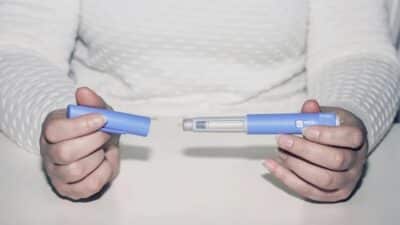Understanding changes in sexual desire is essential for individuals and couples navigating intimate relationships. While sexual desire can fluctuate for both men and women, there’s often a particular curiosity around the shifts in a woman’s libido. In this blog post, we’ll delve into the various factors influencing changes in a woman’s sexual desire and offer insights for fostering understanding and communication in relationships.
Common Changes in a Woman’s Sexual Desire:
- Fluctuations in libido, including periods of heightened sexual desire and times of decreased interest in sexual activity.
- Variations in arousal levels, which may involve differences in physical sensations and responsiveness to sexual stimulation.
- Differences in responsiveness to sexual stimuli, where certain triggers or cues may elicit stronger or weaker sexual responses over time.
- Changes in sexual fantasies or preferences, such as shifts in the types of activities or scenarios that arouse sexual interest.
- Alterations in sexual satisfaction, which can involve changes in the frequency, intensity, or duration of sexual experiences.
- Shifts in emotional connection during sexual encounters, impacting the overall intimacy and satisfaction derived from sexual interactions.
Factors included:
Changes in a woman’s sexual desire can be attributed to various factors, including:
1. Biological Factors:
Biological factors such as hormonal changes, health conditions, and medications can influence sexual desire.
2. Psychological Factors:
A woman’s psychological well-being can greatly influence her sexual desire. Key psychological factors include stress and anxiety, body image issues, and mental health.
High levels of stress or anxiety can dampen sexual desire in women, making it difficult to focus on intimacy. Issues related to body image and self-esteem can influence how comfortable a woman feels with her sexuality. Depression, anxiety disorders, and other mental health issues can impact libido and overall sexual satisfaction.
3. Relationship Dynamics:
The dynamics of a woman’s relationships can have a profound effect on her sexual desire. Key considerations include communication, emotional connection, and conflict resolution.
Open and honest communication about desires, needs, and boundaries is crucial for maintaining a healthy sexual relationship. Feeling emotionally connected to a partner can enhance sexual desire and intimacy. Conversely, relationship conflicts and unresolved resentments can create barriers to sexual intimacy.
4. Sociocultural Influences:
Sociocultural factors play a significant role in shaping a woman’s attitudes and beliefs about sexuality. These include cultural norms, media representation, and religious and cultural beliefs.
Societal attitudes towards women’s sexuality can shape how women perceive and express their desires. Portrayals of female sexuality in media and popular culture can influence self-perception and sexual desire. Additionally, religious or cultural beliefs surrounding sex and gender roles may impact a woman’s comfort with her sexuality.
5. Aging and Life Transitions:
Life transitions and aging can bring about changes in a woman’s sexual desire. Considerations include menopause, parenthood, and career and stress.
The hormonal changes associated with menopause can lead to decreased libido and changes in sexual function. Balancing the demands of parenthood can leave little time and energy for sexual intimacy, affecting desire. Furthermore, advancing age, career responsibilities, and life stressors can all contribute to shifts in sexual desire.
Impacts of Changes in a Woman’s Sexual Desire:
The effects of changes in a woman’s sexual desire can vary widely depending on individual circumstances and the dynamics of the relationship. When a woman experiences a decrease in libido or sexual satisfaction, it may lead to significant consequences. Relationship strain, frustration, and feelings of inadequacy are common outcomes, potentially creating distance between partners and impacting overall relationship satisfaction. Conversely, heightened sexual desire or increased satisfaction can have positive effects. It can foster greater intimacy, strengthen emotional bonds, and contribute to a sense of overall well-being, enhancing the quality of the relationship.
Strategies to Promote Sexual Well-being:
While it’s not always possible to completely prevent changes in a woman’s sexual desire, there are proactive steps individuals and couples can take to promote sexual well-being. Open communication is key, allowing partners to express their desires, concerns, and needs openly and honestly. Prioritizing emotional connection can foster intimacy and strengthen the bond between partners, contributing to a healthier sexual relationship. Additionally, managing stress through relaxation techniques, mindfulness, or seeking professional support can help mitigate its negative impact on sexual desire. Seeking guidance from healthcare professionals or therapists can provide valuable insights and assistance in addressing underlying issues affecting sexual well-being. Exploring various strategies together, such as trying new activities or techniques to enhance intimacy, can also contribute to a fulfilling and satisfying sexual relationship.
Conclusion:
Understanding changes in a woman’s sexual desire requires a holistic approach that considers biological, psychological, relational, and sociocultural factors. By fostering open communication, cultivating emotional connection, and addressing underlying issues, individuals and couples can navigate fluctuations in sexual desire with empathy and understanding. Remember, each woman’s experience with sexual desire is unique, and there’s no one-size-fits-all solution. The key is to approach the topic with sensitivity, respect, and a willingness to learn and adapt together.





